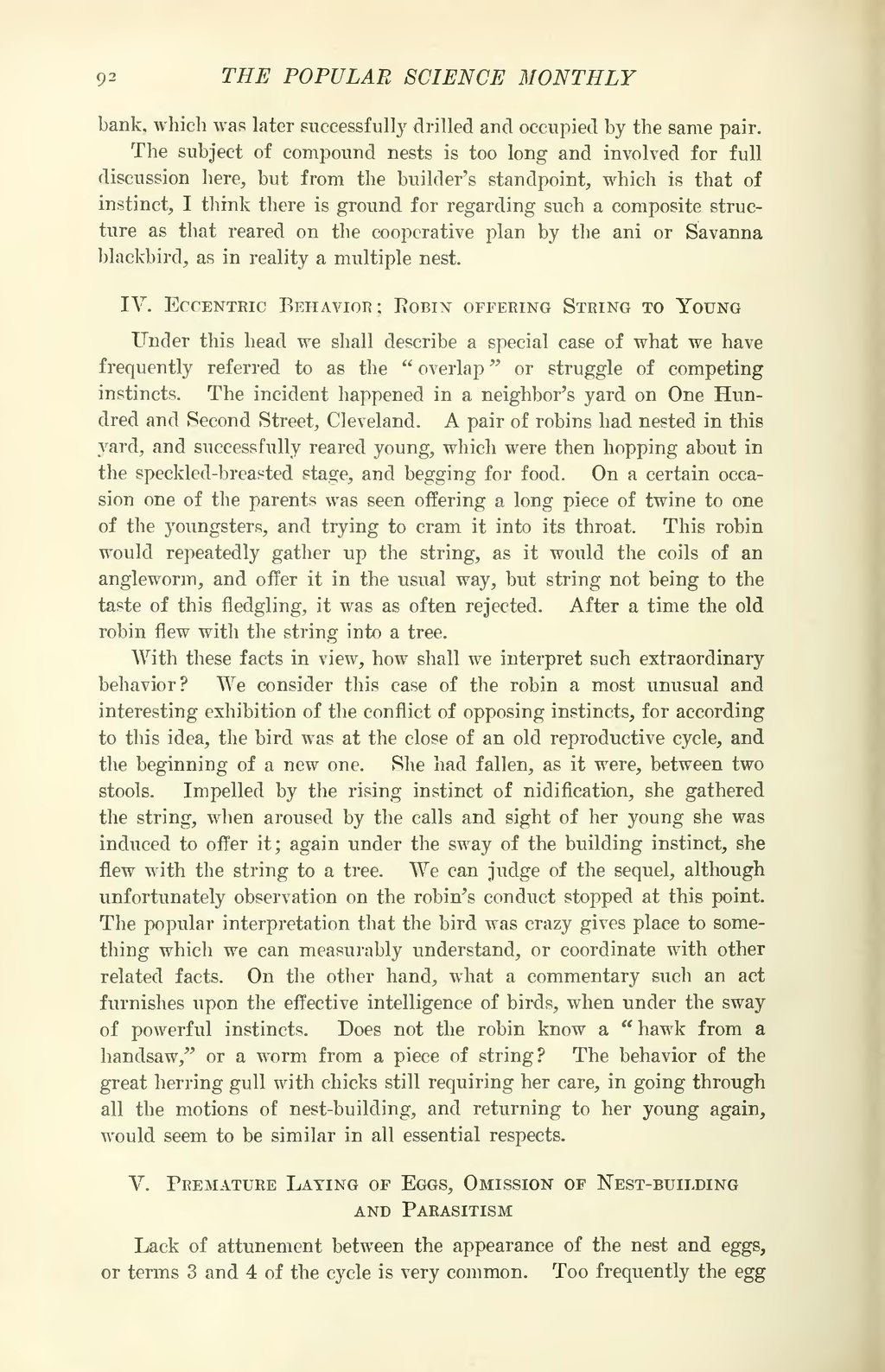bank, which was later successfully drilled and occupied by the same pair. The subject of compound nests is too long and involved for full discussion here, but from the builder's standpoint, which is that of instinct, I think there is ground for regarding such a composite structure as that reared on the cooperative plan by the ani or Savanna blackbird, as in reality a multiple nest.
IV. Eccentric Behavior; Robin offering String to Young
Under this head we shall describe a special case of what we have frequently referred to as the "overlap" or struggle of competing instincts. The incident happened in a neighbor's yard on One Hundred and Second Street, Cleveland. A pair of robins had nested in this yard, and successfully reared young, which were then hopping about in the speckled-breasted stage, and begging for food. On a certain occasion one of the parents was seen offering a long piece of twine to one of the youngsters, and trying to cram it into its throat. This robin would repeatedly gather up the string, as it would the coils of an angleworm, and offer it in the usual way, but string not being to the taste of this fledgling, it was as often rejected. After a time the old robin flew with the string into a tree.
With these facts in view, how shall we interpret such extraordinary behavior? We consider this case of the robin a most unusual and interesting exhibition of the conflict of opposing instincts, for according to this idea, the bird was at the close of an old reproductive cycle, and the beginning of a new one. She had fallen, as it were, between two stools. Impelled by the rising instinct of nidification, she gathered the string, when aroused by the calls and sight of her young she was induced to offer it; again under the sway of the building instinct, she flew with the string to a tree. We can judge of the sequel, although unfortunately observation on the robin's conduct stopped at this point. The popular interpretation that the bird was crazy gives place to something which we can measurably understand, or coordinate with other related facts. On the other hand, what a commentary such an act furnishes upon the effective intelligence of birds, when under the sway of powerful instincts. Does not the robin know a "hawk from a handsaw," or a worm from a piece of string? The behavior of the great herring gull with chicks still requiring her care, in going through all the motions of nest-building, and returning to her young again, would seem to be similar in all essential respects.
V. Premature Laying of Eggs, Omission of Nest-building and Parasitism
Lack of attunement between the appearance of the nest and eggs, or terms 3 and 4 of the cycle is very common. Too frequently the egg
